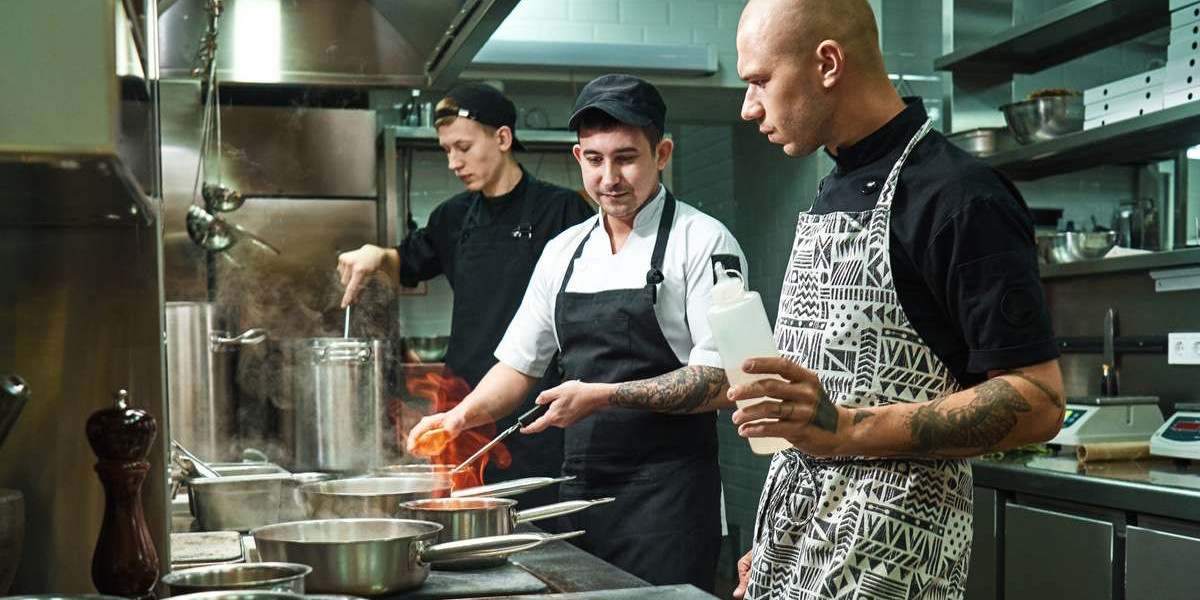The ghost kitchen market has become one of the fastest-growing segments in the global foodservice industry. Designed for delivery-only operations, ghost kitchens eliminate the dine-in experience and instead focus on optimizing food preparation and delivery efficiency. As consumer habits shift toward digital convenience, ghost kitchens are capitalizing on this momentum. However, given the growing competition, success depends on adopting the right set of strategies.
To gain a competitive edge, ghost kitchen operators must not only innovate but also refine their business models based on market trends, customer data, and operational best practices. Below are the most effective winning strategies driving growth and sustainability in the ghost kitchen market.
1. Building Strong and Distinct Virtual Brands
In a space where physical visibility is absent, brand identity is everything. Successful ghost kitchens focus on building unique, memorable virtual brands that connect with specific audiences.
Key tactics include:
Designing niche menus (e.g., vegan comfort food, spicy wings, health bowls)
Using eye-catching logos and packaging
Creating consistent online branding across all food delivery apps
Rather than appealing to everyone, targeting a specific niche allows for brand loyalty and easier recognition in crowded marketplaces.
2. Leveraging Data and Analytics for Smart Decisions
One of the biggest advantages of operating digitally is the access to real-time customer data. Winning ghost kitchens use analytics to understand what sells, when it sells, and whos buying.
Examples of data-driven decisions include:
Menu optimization based on order patterns
Dynamic pricing during high demand hours
Tailored promotions for returning customers
With accurate data insights, ghost kitchens can continuously refine their offerings and enhance customer satisfaction.
3. Operational Efficiency and Kitchen Optimization
Unlike traditional restaurants, ghost kitchens thrive on speed, consistency, and low overhead. Operators who win in this space invest in kitchen layout optimization, efficient workflows, and time-saving tools.
Winning operational strategies involve:
Standardized food prep procedures
Cross-trained kitchen staff
Batch cooking during peak periods
Minimizing food waste and spoilage
A lean and agile kitchen setup ensures higher order volumes, faster turnaround times, and reduced operational costs.
4. Technology Integration Across the Workflow
Technology is the backbone of a successful ghost kitchen. Top-performing kitchens implement end-to-end tech solutions, from order management to delivery tracking.
Must-have tools include:
POS systems integrated with multiple delivery platforms
Kitchen Display Systems (KDS) for order accuracy
Automated inventory tracking
AI-based forecasting tools
These systems help maintain order flow, reduce human error, and boost overall kitchen productivity.
5. Creating Multi-Brand Strategies in One Location
To maximize space and increase revenue, leading ghost kitchen operators often run multiple virtual brands from a single location. This allows them to cater to diverse audiences without the cost of multiple outlets.
Successful implementation includes:
Offering non-overlapping menus (e.g., sushi brand + burger brand)
Cross-utilizing ingredients to reduce inventory needs
Testing new brands based on local demand
Multi-brand operations, when executed well, increase order frequency and help penetrate multiple food niches simultaneously.
6. Partnering with Delivery Aggregators Strategically
While third-party delivery platforms come with commission fees, they also offer wide market exposure. Winning kitchens partner with multiple aggregators but also build strategies to optimize visibility and minimize dependency.
Best practices involve:
Keeping menus consistent across platforms
Participating in promotional campaigns offered by aggregators
Requesting featured placement or high-rating boosts based on performance
In parallel, successful operators also invest in direct-to-consumer (D2C) channels like branded apps and websites to gain better margins and customer data ownership.
7. Prioritizing Customer Experience and Loyalty
In the digital food landscape, customer reviews and repeat business are critical. Ghost kitchens that go the extra mile to create a memorable experiencedespite the lack of face-to-face interactionstand out.
Winning tactics include:
Premium packaging that preserves food quality and presentation
Personalized thank-you notes or discount codes in each order
Fast and courteous customer service through chat or email
Customer-centric practices drive higher ratings, better reviews, and long-term loyalty.
8. Marketing and Social Media Presence
Without a storefront, digital marketing becomes the lifeline of brand discovery. The most successful ghost kitchens build strong social media followings and run targeted ads to drive traffic to their delivery pages.
Effective marketing strategies include:
Instagram-worthy food visuals
Influencer collaborations and online giveaways
Geo-targeted promotions based on delivery zones
Consistent online engagement boosts visibility and positions the brand as relevant and trustworthy in the eyes of consumers.
Conclusion
The ghost kitchen market is brimming with opportunity, but only those with a clear, strategic roadmap will lead the charge. From building strong virtual brands and leveraging data to optimizing kitchen operations and owning the digital space, success in this competitive arena demands precision and adaptability.
As the market continues to evolve, ghost kitchen operators who embrace innovation, understand their customers deeply, and invest in scalable systems will remain at the forefront of this foodservice revolution.
Learn more: https://www.pristinemarketinsights.com/ghost-kitchen-market-report







